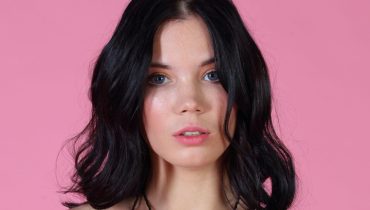When Madeline Howard began noticing halos around streetlights while driving home at night, she assumed it was just fatigue. “I was working twelve-hour days in front of a screen,” she recalls. “My eyes felt gritty, my vision blurred sometimes, and bright lights hurt.”
Her optometrist’s diagnosis was simple: early signs of vitamin deficiency affecting ocular function — particularly vitamin A for eye health. “I’d heard about carrots and eyesight since childhood,” she says with a laugh, “but I never thought it actually mattered — until it did.”
From Screen Fatigue to Clarity: Madeline’s Wake-Up Call
Madeline, a marketing strategist in Austin, Texas, had spent years immersed in digital screens. “Zoom meetings, deadlines, blue light — I lived in pixels,” she admits. Her diet, like many professionals, leaned heavily on convenience. “Coffee, bagels, energy bars — not exactly eye-friendly.” Over time, her vision became less sharp at dusk. “I started avoiding driving at night,” she says. “It scared me — I was only thirty-two.”
During a routine check-up, her doctor mentioned that her low vitamin A levels could explain the symptoms. According to the National Institutes of Health (NIH), vitamin A is essential for the formation of rhodopsin, a protein in the eyes that allows us to see in low light. Deficiency can lead to night blindness, dry eyes, and even corneal damage in severe cases. “That’s when I realized nutrition isn’t just about weight or energy,” Madeline says. “It’s about how you literally see the world.”
Determined to take action, she began researching foods rich in vitamin A and exploring supplements that could safely restore her levels. “It wasn’t about quick fixes,” she says. “It was about building habits that would protect my vision long term.”
The Science Behind Vitamin A and Vision
Vitamin A isn’t a single substance but a group of fat-soluble compounds — including retinol, retinal, and beta-carotene — all crucial for maintaining vision, immune function, and skin integrity. As Mayo Clinic notes, retinol (the active form found in animal products) and beta-carotene (a plant-based precursor) both contribute to healthy eyes by supporting the retina, cornea, and overall visual cycle.
Dr. Alicia Wong, a clinical nutritionist at the Harvard T.H. Chan School of Public Health, explains: “Vitamin A combines with a protein called opsin to form rhodopsin, which detects light. Without enough vitamin A, your eyes can’t adapt to darkness efficiently.” This mechanism is why night blindness is often the first symptom of deficiency.
Antioxidant activity is another critical role. Vitamin A helps neutralize free radicals in ocular tissues, protecting delicate cells from oxidative damage caused by sunlight and environmental stressors. “We live in a digital era full of blue light and UV exposure,” Dr. Wong says. “That oxidative burden accelerates eye aging — but antioxidants like vitamin A and lutein counteract it.”
What the Research Shows
Several studies highlight the connection between vitamin A intake and reduced risk of age-related eye conditions. The landmark AREDS and AREDS2 trials by the National Eye Institute found that nutrients including vitamin A, C, E, zinc, and copper significantly slowed the progression of macular degeneration — a leading cause of blindness in older adults. While vitamin A alone isn’t a cure, it’s a key player in overall ocular defense.
“The takeaway,” Madeline says, “is that nutrition is preventative medicine. You can’t reverse all damage, but you can absolutely strengthen your baseline.”
Rebuilding Health from the Kitchen Up
Madeline’s first step wasn’t buying supplements — it was cleaning out her pantry. “My doctor told me, ‘Eat your colors.’ That phrase stuck,” she recalls. Foods high in vitamin A include liver, salmon, eggs, dairy, and orange or dark-green produce like carrots, spinach, kale, sweet potatoes, and butternut squash. “I started making roasted sweet potatoes for lunch and spinach omelets for breakfast,” she says. “Within weeks, I could feel the difference — less dryness, fewer headaches.”
She also discovered the power of healthy fats. Because vitamin A is fat-soluble, absorption improves when eaten with oil or other fats. “Now I drizzle olive oil on everything,” she says. “It’s the simplest biohack I’ve ever learned.”
Her daily diet soon included carrots, kale smoothies, and salmon bowls. “Eating became part of my self-care,” Madeline says. “Every colorful plate felt like a promise to my future eyesight.”
When Diet Isn’t Enough: Finding the Right Supplement
Despite her best efforts, Madeline’s lab results still showed borderline levels of vitamin A after three months. “I realized diet is amazing, but sometimes your body needs a nudge,” she says. With her doctor’s guidance, she began a low-dose supplement — 2,500 IU of retinyl palmitate daily. “I didn’t want to overdo it,” she notes. “Vitamin A toxicity is real.”
The Centers for Disease Control and Prevention (CDC) warns that excessive vitamin A can lead to dizziness, nausea, and even liver damage. The upper limit for adults is 10,000 IU per day. “I set reminders to take my dose with dinner and never doubled up,” she says.
Madeline also explored natural beta-carotene supplements derived from algae and carrots. “Beta-carotene is safer because your body only converts what it needs into retinol,” she explains. According to the Cleveland Clinic, beta-carotene not only supports eye function but also reduces oxidative stress throughout the body. “It’s like vitamin A’s gentle cousin,” Madeline jokes. “Effective but polite.”
Life After Supplementation: Seeing the World Clearly
After six months of consistent care, Madeline noticed remarkable improvements. “Night driving doesn’t terrify me anymore,” she says. “My eyes feel hydrated, and my vision is sharper.” Even her ophthalmologist confirmed healthier ocular surfaces. “My tear film looked normal again — I almost cried from relief.”
She also noticed a bonus benefit: glowing skin. “Vitamin A supports cell turnover and collagen production,” she says. “It’s the same reason retinol serums work topically — but I was nourishing from the inside.” Research from Harvard Health supports this link, noting that retinoids improve epithelial tissue regeneration across the body, including skin and eyes.
The Role of Vitamin A in Modern Eye Health
In a world dominated by digital screens, the demand for nutrients that protect vision has skyrocketed. “Eye fatigue used to be an older person’s problem,” Madeline says. “Now it’s everyone’s problem.” Vitamin A, combined with other antioxidants like lutein, zeaxanthin, and vitamin E, helps defend against blue-light-induced damage and dryness.
She began using screen filters and followed the “20-20-20” rule recommended by the American Academy of Ophthalmology — every 20 minutes, look at something 20 feet away for 20 seconds. “It’s shocking how much of eye strain is lifestyle, not age,” she says.
Madeline also incorporated hydration, omega-3-rich foods, and regular sleep into her wellness routine. “Eye health is whole-body health,” she emphasizes. “You can’t separate your eyes from the rest of you.”
Lessons from Madeline’s Journey
After nearly a year of consistent attention to nutrition, supplementation, and screen habits, Madeline’s experience became a story she often shares with colleagues. “We spend thousands on glasses and blue-light filters,” she says, “but ignore the simplest protection — what’s on our plates.”
She emphasizes a few guiding principles for anyone hoping to strengthen their vision naturally:
- 1. Prioritize food first: “Supplements are support, not shortcuts. Start with colorful vegetables and whole foods.”
- 2. Don’t exceed safe limits: Stick below 10,000 IU daily unless prescribed by a physician. More isn’t better.
- 3. Pair with healthy fats: Vitamin A absorption increases dramatically when taken with oil or nuts.
- 4. Combine nutrients: Zinc and vitamin E enhance the antioxidant power of vitamin A.
- 5. Listen to your body: Dry eyes, poor night vision, or constant fatigue might be subtle deficiency signs.
Madeline says the biggest takeaway wasn’t just her improved eyesight, but a mindset shift. “I stopped treating my body like a machine and started treating it like a partner,” she says. “When you nourish it right, it rewards you — in clarity, in focus, in peace.”
Eye Health and Emotional Health
Interestingly, Madeline also found a link between her vision recovery and her emotional well-being. “When my eyes were strained, I felt anxious all the time,” she reflects. “Once my vision improved, I felt calmer — more present.” Studies from the NIH show that poor vision is strongly correlated with higher rates of anxiety and depression, especially among young professionals spending over 8 hours daily on screens. “It made sense — if you can’t see clearly, the world feels overwhelming,” she says. “Vitamin A didn’t just help my eyes — it helped me feel grounded again.”
Today, Madeline still takes her small daily dose of vitamin A, but she focuses mostly on real food and conscious living. “It’s not about perfection,” she smiles. “It’s about consistency.” She now ends each day with a carrot smoothie, salmon dinner, and gratitude for her restored clarity. “Vision is a gift — and like any gift, you have to care for it.”
Her message to others is simple but powerful: “You don’t need to wait until you’re scared to see to start taking care of your eyes. Small changes today protect your future tomorrow.” As she looks out her office window at the Austin skyline, sunlight glinting off her glasses, Madeline grins: “Turns out, my mom was right all along — eat your carrots.”
































































